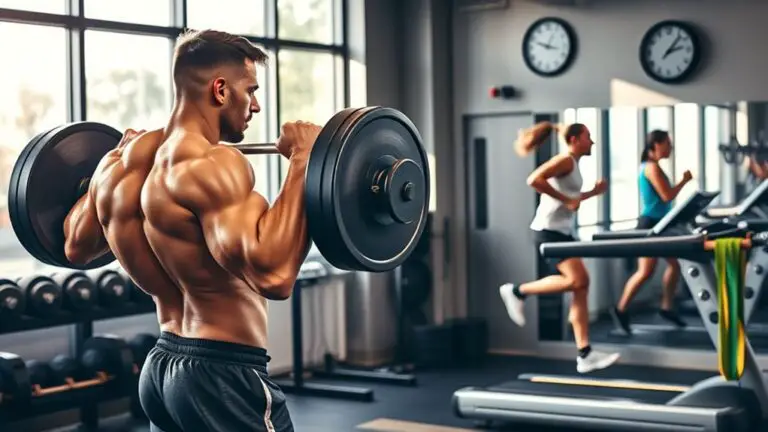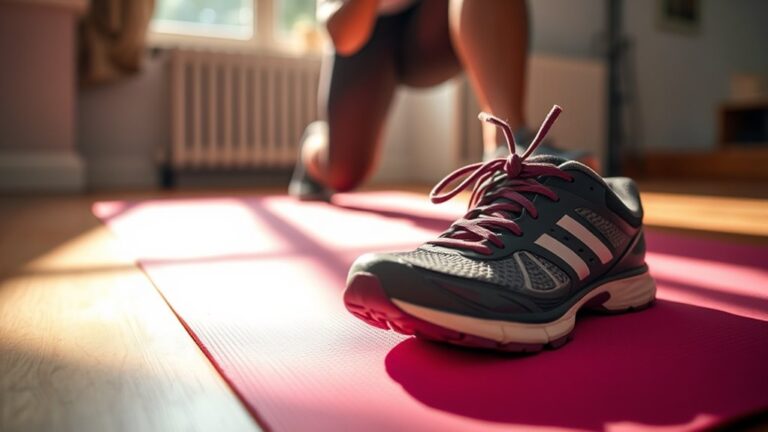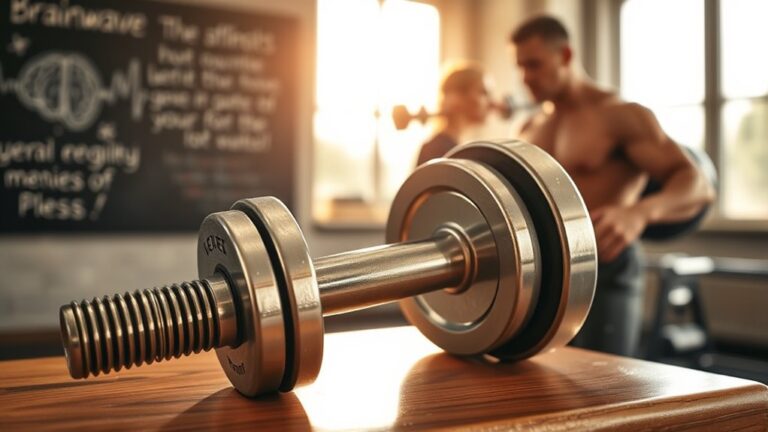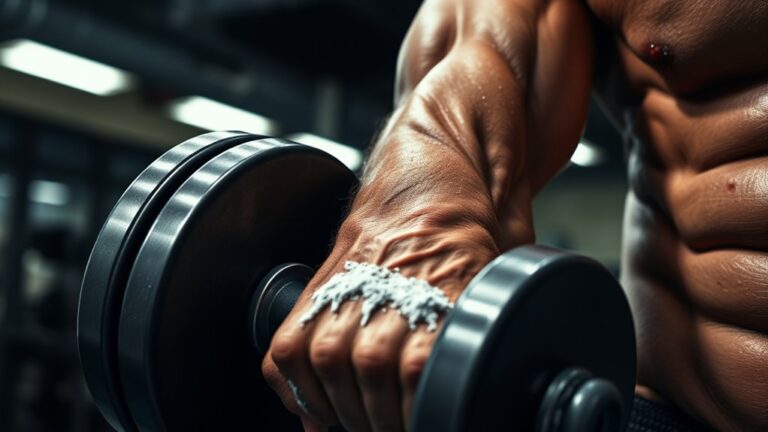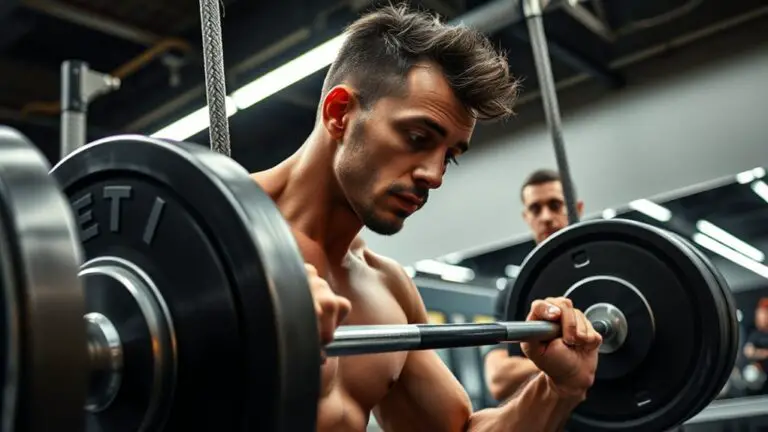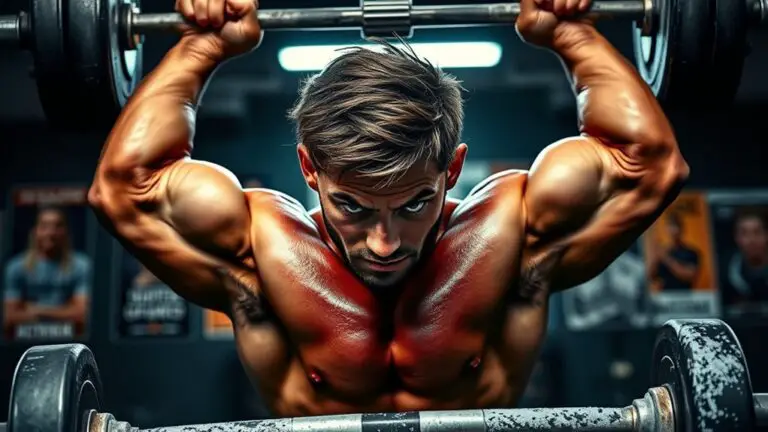How to Improve Your Olympic Lifts for CrossFit Competitions
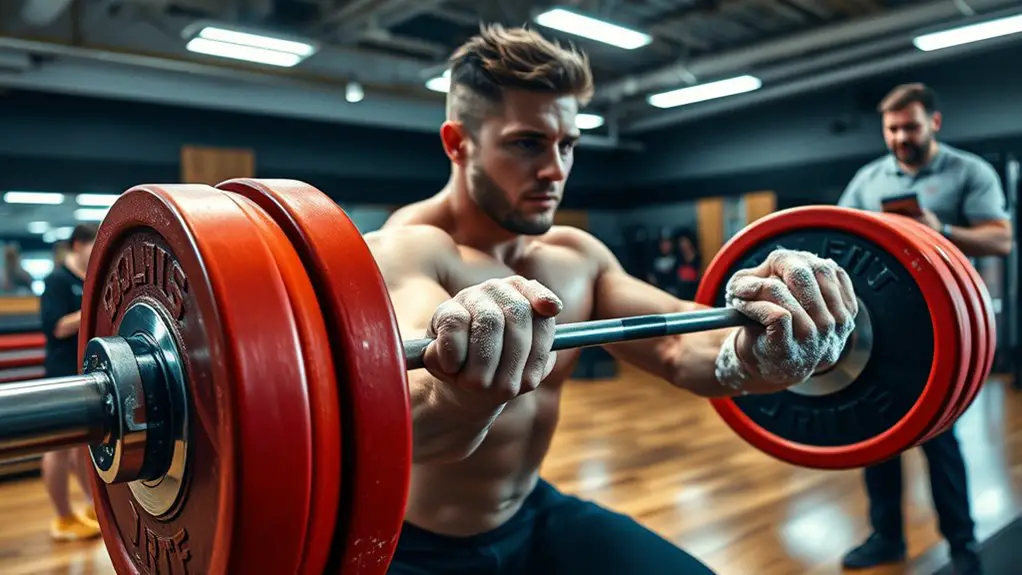
To improve your Olympic lifts for CrossFit competitions, focus on mastering your technique before adding weight. Build a solid foundation with mobility work to enhance your range of motion. Integrate accessory exercises like front squats and deadlifts to increase strength. Incorporate drills to refine your snatch and clean and jerk techniques, and don’t forget the mental aspect, using visualization and positive self-talk to boost confidence. As you progress, evaluate your training methods for ongoing improvement.
Understanding the Fundamentals of Olympic Lifting
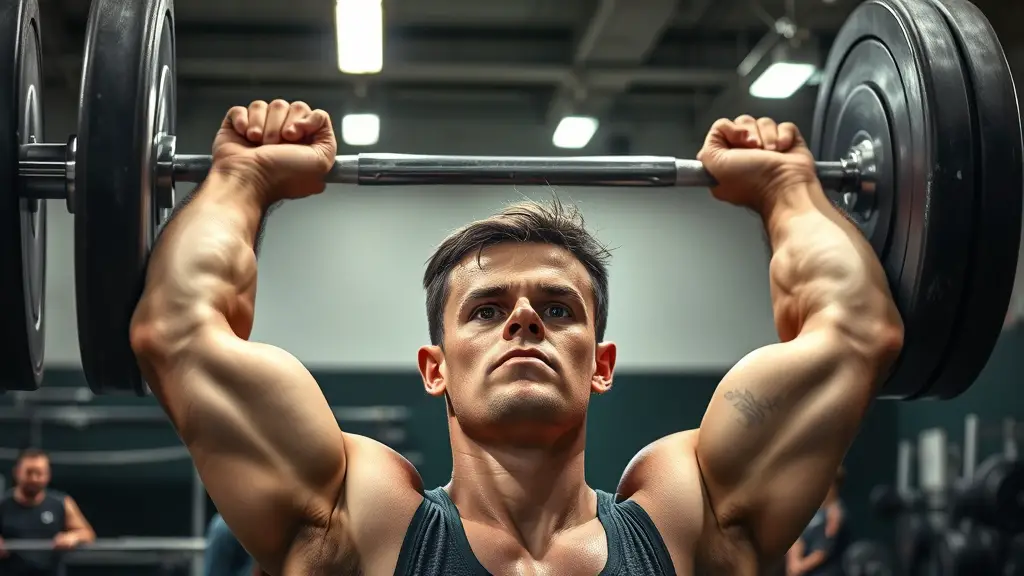
Understanding the fundamentals of Olympic lifting is vital for maximizing performance in CrossFit, as these lifts require not only strength but also technique and coordination. Delving into lifting history reveals that Olympic lifting has evolved considerably, shaped by diverse weightlifting cultures that emphasize precision and efficiency.
To master these lifts, you should focus on key components such as grip, stance, and movement patterns. Begin with the clean and jerk and the snatch, the two primary lifts. Each lift demands specific biomechanics; for instance, an explosive drive from the legs is essential.
Incorporating drills that enhance mobility and stability will lay a strong foundation. Pay attention to your bar path, ensuring it remains close to your body to maximize leverage. Consistent practice and feedback will further refine your technique, making you not just a stronger athlete but a more skilled one as well, ready to excel in CrossFit competitions.
Importance of Technique Over Weight
While it might be tempting to load up the barbell and chase heavier weights, prioritizing technique is essential for long-term success in Olympic lifting, particularly within the context of CrossFit. Focusing on technique mastery allows you to develop the necessary skill set to execute lifts correctly and safely. With solid technique, you’ll reduce the risk of injury and increase your efficiency during competitions.
Instead of rushing to increase your weights, emphasize mastering the fundamental movements first. Break down each lift, paying attention to your positioning, timing, and coordination. Incorporate drills that reinforce proper mechanics, ensuring each lift is performed with precision.
Once you’ve achieved a solid technical foundation, you can begin weight progression. Gradually add weight, ensuring your technique remains intact. This approach not only builds confidence but also fosters sustainable growth in your lifting capabilities, enhancing your overall performance in CrossFit competitions.
Building a Solid Foundation With Mobility Work
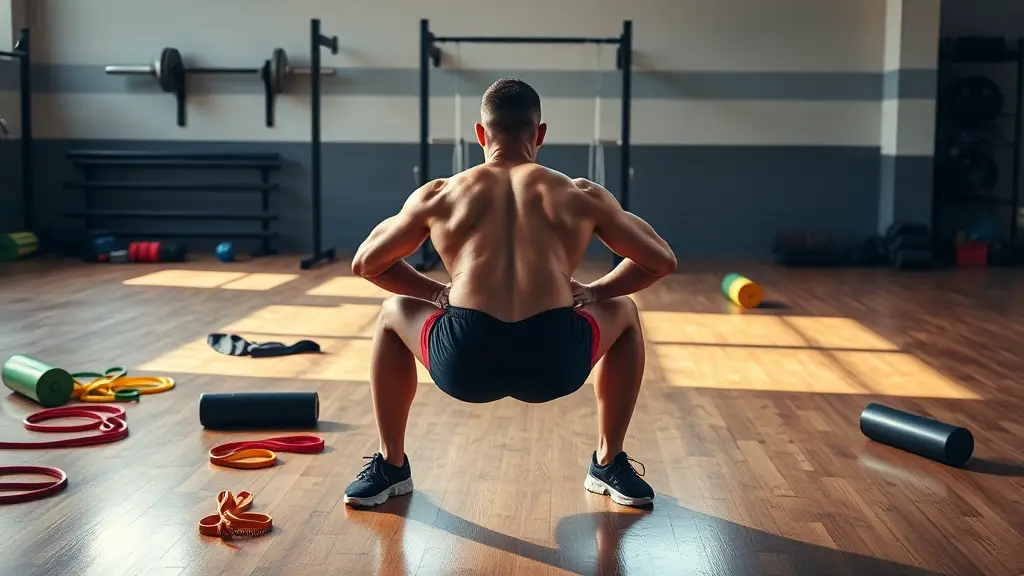
To improve your Olympic lifts, you need to prioritize joint mobility as a fundamental aspect of your training. Incorporating dynamic stretching techniques will enhance your range of motion and prepare your body for the demands of lifting. Focus on targeting key muscle groups, as this will create a solid foundation for your performance and reduce the risk of injury.
Importance of Joint Mobility
Joint mobility plays an essential role in enhancing your Olympic lifts, as it directly affects your range of motion and overall performance. Prioritizing joint stability through targeted flexibility training can greatly improve your lifting mechanics. Incorporating mobility drills into your routine promotes range enhancement and guarantees proper joint alignment during functional movements. Dynamic mobility exercises can prepare your joints for the demands of Olympic lifts, reducing the risk of injury. By focusing on joint mobility, you’re not only maximizing your lifting potential but also establishing a solid foundation for consistent progress. Remember, a well-rounded approach to mobility work will enhance your performance and contribute to long-term injury prevention, allowing you to compete at your best in CrossFit competitions.
Dynamic Stretching Techniques
Incorporating dynamic stretching techniques into your warm-up routine is essential for building a solid foundation in mobility work. Dynamic warm-ups enhance your range of motion and prepare your muscles for the demands of Olympic lifts. Start with mobility drills that engage major muscle groups, focusing on controlled movements. Exercises like leg swings, arm circles, and walking lunges activate the body and promote blood flow. Aim for a sequence that gradually increases intensity, ensuring that your joints are adequately prepared. Always prioritize proper form over speed to prevent injury. By consistently integrating dynamic stretching into your regimen, you’ll improve your overall performance and make significant strides in your Olympic lifting technique. This will ultimately enhance your competitiveness in CrossFit.
Targeting Key Muscle Groups
While many athletes focus solely on strength training, targeting key muscle groups through mobility work is essential for mastering Olympic lifts. Incorporating targeted workouts helps improve muscle activation, ensuring your body can perform lifts with maximum efficiency. Start by focusing on major muscle groups involved in Olympic lifts, such as the shoulders, hips, and ankles.
| Muscle Group | Targeted Mobility Work |
|---|---|
| Shoulders | Shoulder dislocates |
| Hips | Hip openers |
| Ankles | Ankle dorsiflexion stretches |
| Core | Plank variations |
| Thoracic Spine | Thoracic extensions |
These exercises not only enhance flexibility but also prepare your body for the dynamic demands of Olympic lifting, leading to improved performance in competitions.
Incorporating Accessory Exercises for Strength

To enhance your Olympic lifts in CrossFit, integrating accessory exercises focused on strength can be highly beneficial. Incorporating these accessory lifts into your routine not only builds strength but also improves stability and overall performance. Here are some effective accessory exercises to take into account:
- Front Squats: Build leg strength and core stability.
- Deadlifts: Enhance posterior chain strength essential for lifts.
- Overhead Press: Develop shoulder strength and stability for lifts.
- Pull-Ups: Strengthen your back and improve muscle engagement.
- Power Cleans: Enhance explosiveness and technique for Olympic lifts.
Drills to Enhance Your Snatch Technique
Improving your snatch technique can greatly elevate your performance in CrossFit, and there are several effective drills you can implement. One key drill is the snatch balance, which helps you develop speed and stability in the receiving position. Start with a lightweight barbell, focusing on dropping under the bar quickly while maintaining an upright torso. This drill enhances your confidence in the catch phase.
Another essential drill is the overhead squat. It not only strengthens your core and legs but also reinforces proper positioning for the snatch. Begin with a PVC pipe or lightweight barbell, ensuring your shoulders are engaged and your hips drop below parallel. Aim for a deep squat while keeping your arms extended overhead.
Incorporating these drills into your training routine will refine your snatch technique, making you more efficient and effective during competitions. Practice consistently, and you’ll see significant improvements.
Perfecting Your Clean and Jerk
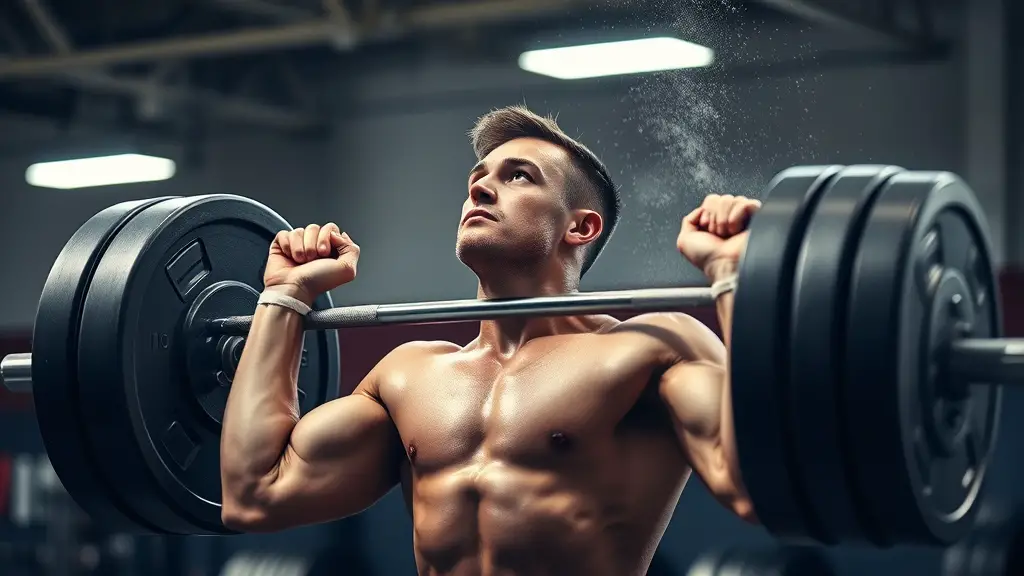
Mastering the clean and jerk is essential for maximizing your performance in CrossFit, as it combines strength, technique, and timing. To perfect your clean and jerk, focus on the following key components:
- Establish a strong grip: Your grip should be firm but relaxed to maintain control.
- Refine your clean technique: Prioritize a smooth shift from the pull to the catch to minimize energy loss.
- Engage your core: A strong core stabilizes your body throughout the lift.
- Optimize jerk timing: Timing is vital; make sure you drive through your legs before dropping under the bar.
- Practice footwork: Quick and precise foot movements can enhance stability during the jerk.
The Role of Mental Preparation in Lifting
Mental preparation is essential for maximizing your Olympic lifts, as it directly impacts your performance. Utilizing visualization techniques can enhance your focus and confidence, while practicing mindfulness during lifts helps maintain ideal form. Additionally, addressing performance anxiety through specific strategies can lead to more consistent results in your training.
Visualization Techniques for Success
How can visualization enhance your Olympic lifting performance? By employing effective visualization strategies, you can notably improve your mental preparation. Mental imagery allows you to create a clear picture of your lifts, fostering confidence and focus. Here are key benefits of incorporating visualization into your training:
- Enhances muscle memory by mentally rehearsing movements
- Reduces anxiety by familiarizing yourself with competition scenarios
- Boosts concentration during lifts by focusing on desired outcomes
- Improves technique through detailed visualization of each phase
- Increases motivation by visualizing successful lifts and achievements
Utilizing these techniques consistently can help you mentally prepare for CrossFit competitions, allowing your physical skills to shine. Embrace the power of visualization and watch your performance soar!
Mindfulness During Lifts
While many athletes focus solely on physical training, incorporating mindfulness into your Olympic lifts can greatly enhance your performance. Mindful breathing is an essential technique; it helps you center your thoughts and maintain composure. Before each lift, take a few deep breaths, allowing your body to relax and your mind to clear. This practice not only reduces tension but also heightens your awareness of body mechanics.
Implement focus techniques by visualizing each movement before you execute it. Picture the bar path and your body alignment, creating a mental rehearsal that primes your muscles. By being present in the moment, you can improve your concentration, minimize distractions, and ultimately lift more effectively. Embracing mindfulness can elevate your competition performance considerably.
Overcoming Performance Anxiety
Building on the practice of mindfulness, addressing performance anxiety is essential for maximizing your Olympic lifting potential. Developing a strong performance mindset is vital, as it helps you focus while lifting. Here are some effective coping strategies to manage anxiety:
- Visualize successful lifts before your attempt.
- Practice deep breathing techniques to calm your nerves.
- Set realistic goals to reduce pressure.
- Use positive self-talk to reinforce confidence.
- Establish a pre-lift routine to create familiarity.
Tracking Progress and Making Adjustments
As you endeavor to improve your Olympic lifts in CrossFit, tracking progress becomes essential for identifying strengths and weaknesses. Create a detailed log of your lifts, including weights, reps, and technique notes. This method of progress tracking allows you to observe patterns over time, helping you pinpoint where you excel or struggle.
Once you’ve gathered enough data, implement adjustment strategies based on your findings. If a specific lift consistently lags, analyze your technique or consider modifying your training volume. For example, if your snatch is faltering, assess your grip or starting position. Regularly revisiting your log will provide insights into whether adjustments are effective.
Don’t hesitate to adapt your training regimen based on these insights. The more you fine-tune your approach, the better you’ll perform. Remember, consistent evaluation and adjustment are keys to mastering Olympic lifts and achieving your competitive goals.
Frequently Asked Questions
How Often Should I Practice My Olympic Lifts Each Week?
To determine how often you should practice your Olympic lifts each week, consider your lifting frequency and overall training schedule. Most athletes benefit from practicing these lifts 2 to 4 times weekly, allowing for adequate recovery and muscle adaptation. Balance your sessions with technique work, strength training, and conditioning. Adjust this frequency based on your experience level and competition goals, ensuring you’re not overtraining while still making consistent progress in your lifts.
What Types of Shoes Are Best for Olympic Lifting?
Did you know that over 60% of Olympic lifters prefer specialized lifting footwear? When it comes to choosing the best shoes for Olympic lifting, look for brands like Nike, Adidas, and Inov-8, which offer stability and a solid base. These shoes should have a raised heel to improve your squat depth and enhance balance. Prioritize comfort and fit, as well, since proper lifting footwear can greatly impact your performance and safety during lifts.
Can I Improve My Lifts Without Heavy Weights?
Yes, you can improve your lifts without heavy weights by focusing on lifting techniques and incorporating accessory exercises. Start with lighter weights to refine your form, ensuring your movements are precise and controlled. Use exercises like front squats, snatch balances, and overhead presses to build strength and stability. Additionally, practicing drills that enhance your technique can lead to significant improvements in your overall performance without the need for heavy lifting.
Should I Focus on One Lift at a Time?
Imagine a sculptor chiseling away at marble, focusing on one section at a time to create a masterpiece. Similarly, you should concentrate on one lift at a time. This focused training allows you to master lift variations, honing your technique and strength without overwhelming yourself. By breaking down your practice into manageable pieces, you’ll refine each lift more effectively, ensuring steady progress and confidence in your overall lifting proficiency.
How Do I Prevent Injuries While Lifting?
To prevent injuries while lifting, you should prioritize warm-up routines and mobility exercises. Start each session with dynamic stretches to increase blood flow and prepare your muscles. Incorporate mobility exercises targeting your hips, shoulders, and ankles to enhance your range of motion. Make certain you’re using proper form during lifts, and don’t hesitate to scale the weight if necessary. Listening to your body is key; if something feels off, it’s better to take a step back.
